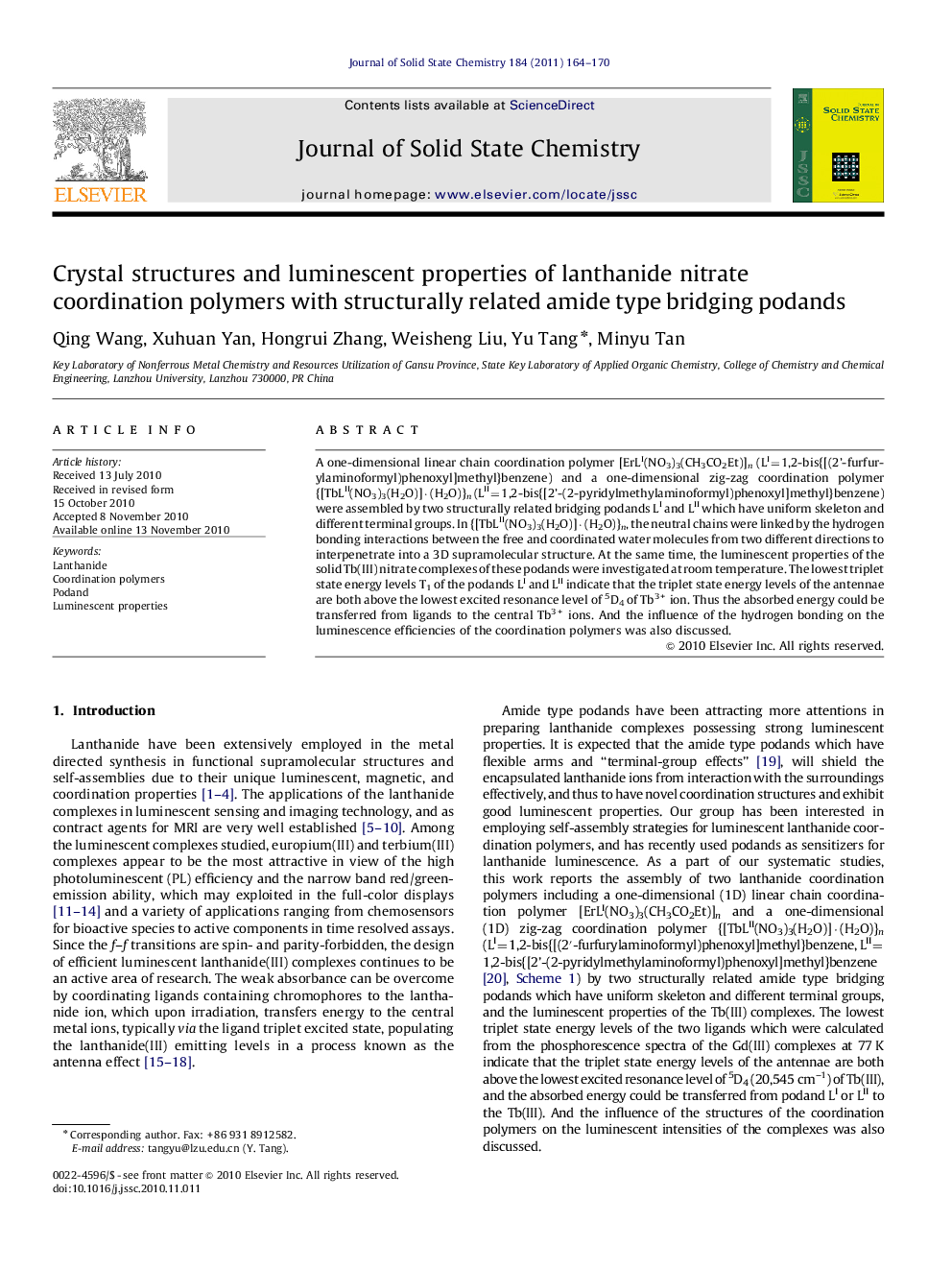| Article ID | Journal | Published Year | Pages | File Type |
|---|---|---|---|---|
| 1332227 | Journal of Solid State Chemistry | 2011 | 7 Pages |
A one-dimensional linear chain coordination polymer [ErLI(NO3)3(CH3CO2Et)]n (LI=1,2-bis{[(2'-furfurylaminoformyl)phenoxyl]methyl}benzene) and a one-dimensional zig-zag coordination polymer {[TbLII(NO3)3(H2O)]·(H2O)}n (LII=1,2-bis{[2'-(2-pyridylmethylaminoformyl)phenoxyl]methyl}benzene) were assembled by two structurally related bridging podands LI and LII which have uniform skeleton and different terminal groups. In {[TbLII(NO3)3(H2O)]·(H2O)}n, the neutral chains were linked by the hydrogen bonding interactions between the free and coordinated water molecules from two different directions to interpenetrate into a 3D supramolecular structure. At the same time, the luminescent properties of the solid Tb(III) nitrate complexes of these podands were investigated at room temperature. The lowest triplet state energy levels T1 of the podands LI and LII indicate that the triplet state energy levels of the antennae are both above the lowest excited resonance level of 5D4 of Tb3+ ion. Thus the absorbed energy could be transferred from ligands to the central Tb3+ ions. And the influence of the hydrogen bonding on the luminescence efficiencies of the coordination polymers was also discussed.
Graphical AbstractTwo one-dimensional lanthanide coordination polymers were assembled by two structurally related bridging podands, and the effects of the structures on luminescent properties of the solid Tb(III) nitrate complexes were investigated.Figure optionsDownload full-size imageDownload as PowerPoint slideResearch Highlights► Two structurally related amide type bridging ligands were designed and synthesized. ► Two one dimensional lanthanide nitrate coordination polymers were obtained. ► The structure effects on luminescent properties of the terbium complexes were discussed.
